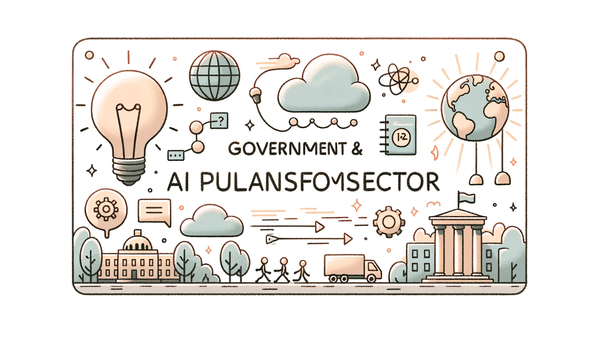Innovations in AI and Warehouse Automation
This comprehensive exploration of artificial intelligence delves into its transformative impact across industries—from redefining entertainment with AI-powered dubbing and revolutionizing customer service via live chat to reshaping automation in warehouses and redefining the modern workplace. We examine recent breakthroughs in AI hardware, software, and competitive innovations, while also reflecting on market responses and the broader implications for businesses worldwide.
AI Meets Entertainment: Amazon’s Bold Move into AI-Aided Dubbing
In a pioneering effort to enhance global accessibility and improve audience engagement, Amazon is testing an AI-aided dubbing feature on Prime. By replacing original audio with translated dialogues, the streaming giant aims to make a broader catalog of films and series, including classics like the 2003 animated film “El Cid: La Leyenda,” more accessible to diverse audiences. This initiative is a fine example of how advanced machine learning and natural language processing are not only breaking down language barriers but also enriching the viewer experience.
The unique aspect of Amazon’s implementation is its partnership with local dubbing professionals. This collaborative approach ensures that the AI system does not operate in isolation, but rather augments human expertise – a strategy that underlines a key principle in modern AI: human-in-the-loop. By blending the precision and speed of AI with the cultural sensibility and emotional intelligence of human professionals, the dubbed content is poised to retain the subtle nuances inherent in the original material.
"Artificial intelligence is the science of making machines do things that would require intelligence if done by men." – John McCarthy, What Is Artificial Intelligence?
Notably, this evolution in dubbing is not occurring in a vacuum. Streaming platforms like YouTube and Meta have already been enhancing viewer experience through automated translations and voice tools. These innovations set the stage for a future where global media access is no longer limited by language, opening up new markets and transforming how localized content is delivered. By testing these advanced solutions, Amazon is not only aligning with industry trends but also setting benchmarks in quality and user assurance.
Readers interested in exploring similar digital transformations might visit our article on Home Depot Harnesses AI to Revamp Sales Strategy for additional insights into how AI is revolutionizing various sectors.
Semiconductors, Software, and the Shifting Dynamics of AI Investments
The AI investment landscape is characterized by a profound interplay between hardware and software. This interplay has witnessed US chip companies, once at the peak of the industry, facing challenges as emerging players and new technologies shift the focus towards software and services. According to recent reports, while chip stocks such as Nvidia, AMD, and Broadcom have seen declines—partly due to market jitters spurred by U.S. tariffs, export restrictions, and fierce global competition—there’s an emerging consensus that the next big leap in AI might come from software innovations.
This evolving view signals a strategic pivot: instead of betting solely on the physical performance of chips, many companies are investing in developing robust AI software that can drive smarter decision-making, efficient data processing, and enhanced service delivery. Indeed, software innovations have started to stand shoulder-to-shoulder with hardware breakthroughs, providing the intelligent backbone required to harness the full potential of AI applications.
Recent developments also highlight the complexities of the global semiconductor market. For instance, formidable competition from Chinese tech companies, as illustrated by Alibaba’s new foray into AI technology, has led to market reassessments among U.S. tech giants. Exploring these trends further provides a window into the intricate balance between hardware capabilities and the innovative applications that drive market adoption—the narrative is very much a battle of forces where software may indeed prove to be the decisive element.
For businesses and technology enthusiasts, understanding these shifts is crucial. As we have seen in our discussion on innovative AI strategies, AI’s evolution incorporates both cutting-edge semiconductor technology and breakthrough software approaches. The ongoing transformation reminds us that in the world of AI, adaptability and multifaceted innovation are key.
Warehouse Automation: Transforming Logistics with AI-Powered Robotics
The surge in automation in the industrial and logistics sectors is one of the more tangible real-world applications of AI today. A notable example is the partnership between Photoneo and Jacobi Robotics, which is transforming warehouse operations through AI-powered robotic systems. These advanced systems can streamline operations, optimize inventory management, and reduce human error. As warehouses become more automated, the implications are vast—not just for supply chain efficiency but also for worker safety and logistics optimization.
AI-driven robotics are reshaping how goods are sorted, transported, and managed. The real-time data processing capabilities of AI ensure that the robots can quickly adapt to changing conditions within the warehouse environment, leading to improved speed and accuracy. Anecdotal evidence shows that companies employing these technologies report significant reductions in operational bottlenecks and increased throughput, a promising sign for industries looking to modernize with minimal disruptions.
This rapid integration of AI into industrial robotics also reinforces emerging trends detailed in our AI advancements revolutionizing industries article. Healthcare, manufacturing, and retail spaces are just some areas where similar applications are finding steady traction, underscoring the broader industry-wide shift toward leveraging AI for automation and efficiency.
New Frontiers in Competitive AI: Alibaba’s QwQ-32B Challenges the Status Quo
As the AI race accelerates, competitive dynamics are intensifying among global tech behemoths. Alibaba’s recent unveiling of its new AI model, QwQ-32B, positions it as a formidable competitor to established players such as DeepSeek and even cutting-edge models from OpenAI. According to industry commentators, QwQ-32B is not only designed to excel in conventional tasks like mathematical operations and coding challenges, but it also demonstrates robust competitive performance amidst the increasingly crowded AI ecosystem.
However, the excitement surrounding these advancements is tempered by cautious market responses. For example, despite the buzz, Alibaba's stock saw only a modest 0.7% uptick following the announcement, hinting at underlying market uncertainties. At the same time, the competitive landscape is being reshaped as companies like DeepSeek witness reactive shifts after their own product launches, compounding speculation about the future directions of AI technology.
Industry observers are intrigued by the long-term implications of these technological rivalries. With US tech firms reevaluating their signals amidst new Chinese innovations, there’s anticipation that such competitive pressures could spur accelerated adoption of AI across various sectors. The competitive push in the AI domain serves as a reminder that while market fluctuations are inevitable, the long-term trajectory is one of growth and expansive application.
This intricate balance between innovation and market performance outlines a paradox in modern AI development—where technological advancements drive progress despite short-term investor caution. For further context on rival innovations and their global impact, you might want to check out our overview of evolving AI trends.
Market Reflections: The Impact of AI on Chip Stocks and Investor Sentiment
The financial arena has not been immune to the sweeping impact of AI innovations. Investors and analysts have observed notable declines in chip stocks recently, with names like Nvidia and AMD taking substantial hits. The market’s reaction has been influenced by a combination of factors including geopolitical tensions, U.S. tariffs, and the rapid evolution of competing technologies. Alongside declining chip stocks, figures like Broadcom and Marvell Technology have experienced downward pressure, reminding us that the stakes in the tech market are as high as ever.
One significant factor is the influence of AI on market expectations. As emerging software-based AI solutions start to challenge traditional hardware paradigms, investors are recalibrating their portfolios. While this transition can lead to short-term volatility, the convergence of software and hardware innovation ultimately promises a more resilient technological future. The current market trends are a microcosm of a dynamic industry adjusting to renewed competitive pressures and evolving operational methodologies.
Though market jitters persist, one cannot help but see the potential for a recalibration of investor focus. As we continuously report on technological advances at the intersection of tech and market dynamics, it becomes evident that fluctuations in the semiconductor sector are often precursors to deeper shifts in the technology landscape. Investors are increasingly betting on AI software capabilities as being as crucial as the underlying hardware—a sentiment that highlights the broader integration of AI into everyday technology and business solutions.
Enhancing Customer Experience: Parts Town’s AI-Powered Live Chat Transformation
The benefits of AI extend well beyond production lines and financial markets. In the realm of customer service, Parts Town is making a significant leap forward by integrating an AI-powered live chat tool into its digital platforms. This innovative feature supports interactions in 27 different languages, ensuring that customers receive rapid and accurate responses to their inquiries—a transformative impact that enhances the overall shopping experience.
With the new tool, response times are 40% faster than the industry norm, a development that underscores the potential for AI to streamline operations and improve customer satisfaction. More striking is the fact that while chat interactions have doubled, the conversion rate has increased by a notable 36%, converting customer engagement directly into sales. This is not merely a technical upgrade; it represents a strategic investment in robust customer support infrastructure, one that is set to redefine digital commerce norms on a global scale.
The move by Parts Town is a microcosm of broader trends observed across industries. By harnessing AI to address complex queries and enable more personalized service, organizations can free up human agents to focus on high-value tasks while ensuring an efficient, customer-centric approach. This transformation in customer service isn't just a feature; it's a paradigm shift in how technology and human experience intersect in the digital commerce world.
For insights into similar innovations disrupting traditional business practices, see our article on transformative AI trends in various sectors.
Reimagining Work: AI as a Catalyst for Enterprise Transformation
Perhaps one of the most profound impacts of AI is its ability to reshape the modern workplace. Insights from The Josh Bersin Company shed light on how leading organizations are leveraging AI to redefine roles, enhance operational efficiencies, and boost overall employee experiences. Rather than viewing AI as a job-eliminating tool, progressive companies are embracing it as a means to augment workflows. AI is seen as a critical catalyst to reimagine work—optimizing HR outcomes, streamlining recruitment processes, and even automating mundane administrative tasks.
Kathi Enderes, SVP of Research at Bersin, emphasizes that businesses must begin by pinpointing specific challenges, such as employee attrition and inefficient recruitment, before deploying AI strategies tailored to these needs. Real-world implementations of SAP AI tools have led to dramatic improvements: some companies report up to a 20% increase in employee satisfaction and significant reductions in the time required to generate job descriptions. This practical application of AI is shifting conventional HR processes toward more streamlined, efficient, and employee-friendly operations.
Moreover, fostering cross-departmental collaboration that integrates AI solutions within the workplace is essential. By combining insights from various sectors—ranging from logistics and manufacturing to customer service—companies can better harness AI’s transformative power. As industries across the board recalibrate organizational structures, the integration of AI is poised to become a fundamental element of workforce innovation.
Reflecting this broader industry sentiment, a popular proverb comes to mind: "Innovation distinguishes between a leader and a follower." This encapsulates the essence of how organizations are now positioning themselves in a rapidly evolving digital economy—where embracing AI is no longer optional but a necessity for remaining competitive. For further insights on AI’s impact on work and organizational dynamics, you might also be interested in our feature on industry-wide AI transformations.
Integrating Insights: Reflections on AI’s Far-Reaching Impact
The diverse applications of AI discussed above highlight the vast landscape over which artificial intelligence exerts its influence. From enhancing entertainment experiences with AI-driven dubbing to stirring up competitive dynamics in tech markets, AI is weaving itself into the fabric of modern industry. Whether the emphasis is on improving the quality of content localization, streamlining warehouse operations through robotic automation, or driving customer engagement with advanced chat tools, the underlying message is the same: AI is not a fleeting trend, but a foundational catalyst for change.
In our journey through AI’s recent breakthroughs—from Amazon’s innovative dubbing trial to Alibaba’s competitive QwQ-32B model and beyond—it becomes clear that technology and human ingenuity are converging in unprecedented ways. Each new development is not merely about replacing human effort, but about augmenting our capabilities, refining efficiencies, and ultimately creating a more connected, accessible world.
As we navigate this evolving terrain, it is essential for both industry leaders and enthusiasts to remain informed about the latest trends and breakthroughs. Thoughtful consideration of market impacts, technological integrations, and the ethical implications of AI deployment is paramount. In the words of A.R. Merrydew, "If you could travel back in time, you would miss out on all of the mistakes you made. You would undoubtedly be someone very different. Long live my past and my mistakes." This reflective sentiment encourages us to learn from past innovations while continuously striving to push the boundaries of what is possible with AI.
Combining analytical insights with practical case studies, the move toward AI integration is reshaping not only how industries operate, but also the very nature of work and creativity. Whether you are a technologist, a business leader, or simply an enthusiast, keeping abreast of these transformative trends will be key to leveraging AI’s full potential in the years ahead.
Further Readings
For those eager to explore more about the impact and advancements of AI across various sectors, you might enjoy these insightful articles:




